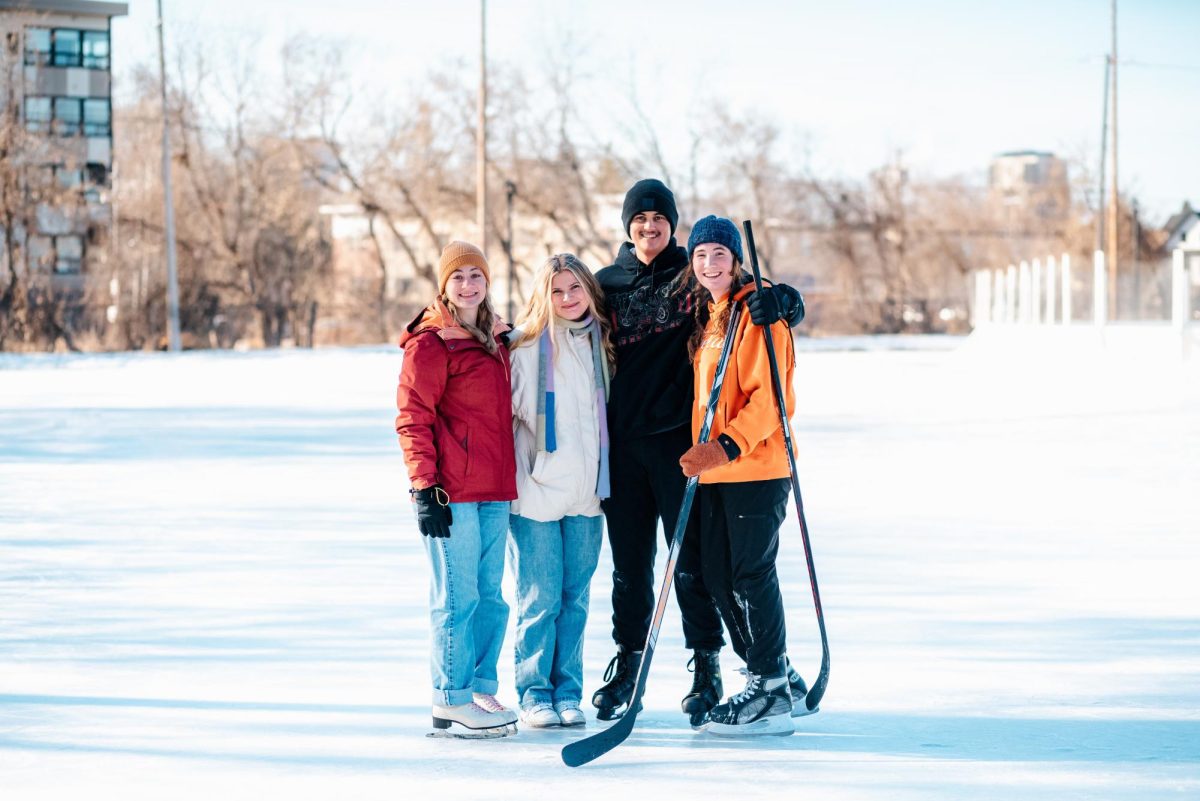The El Niño phenomenon has made for a warmer winter season, impacting local sports and wildlife, and is bringing youth voices to the climate change conversation in Minnesota.
Due to the weather phenomenon, Minnesota has been persistently warm, breaking records by a large margin of 12.3 degrees Fahrenheit in the Twin Cities this December. The Twin Cities’ heat broke a 145-year record from December 1877.
Kenny Blumenfeld, senior climatologist at Minnesota’s Department of Natural Resources, said the current warm weather across the state matches the usual trends of the El Niño phenomenon. El Niño occurs when warmer surface waters in the Pacific Ocean develop near the equator, reducing wind speed on land and ultimately making for warmer temperatures, according to Blumenfeld.
“[El Niño] has a large influence on the global climate and one of the reasons is because the Pacific Ocean is so huge,” Blumenfeld said.
Generally, El Niño makes the entire plant warmer for nine months or more. But in Minnesota, stark weather changes are most often felt from November to January, Blumenfeld said. He added El Niño’s precise effects are not necessarily predictable but a spectrum of intensity.
Blumenfeld said the cycle is regular, but “not totally easy to predict. … It’s a cyclical kind of repeating pattern that’s natural that has always been there.”
He said the usual cold air is trapped up north while the humidity is stuck down south, making Minnesota winters dry and mild. Despite the return of usual below-freezing temperatures, they will not stay for long with El Niño, according to Blumenfeld.
“We’ve had this interlude where kind of normal winter conditions have invaded the region,” Blumenfeld said. “There’s really nothing unusual about that either.”
According to Blumenfeld, this year’s El Niño is historically strong and could lead to warm weather lasting into March. Blumenfeld said this El Niño will likely weaken throughout the spring and into June or July.
“Even if the ocean will begin cooling it takes a little time for the atmosphere and all the weather patterns to catch up,” Blumenfeld said. “We sometimes can remain under the influence of an El Niño pattern even into the following fall.”
Susan Phillips, executive director of Climate Generation, said warmer conditions mean warmer lake and river water temperatures, which impacts some fish species.
Phillips said increased flooding has negatively affected wild rice growing, impacting Ojibwe people in northern Minnesota. Phillips added the increased water could also negatively impact commodity farmers growing soybeans and corn.
“We will likely start spring in a drought, and that’s going to affect farmers,” Phillips said. “It has kind of a ripple effect on almost everything that we do.”
Anna Schnuckle, secretary of the University’s alpine ski team, said the warmer weather was tough to deal with, especially trying to fit multiple teams onto one hill, making for crowded lane space. Still, the ski team was able to start only a week later than usual, Schnuckle said.
“We definitely got lucky that we still were able to get out and practice before the break,” Schnuckle said.
Alex Weinberger, the ski team’s women’s captain, said the team still has successful practices through the changing weather. Weinberger added the lack of cold temperatures gave the snow an unusual texture and was sometimes patchy enough for the team’s skis to hit the bare ground.
“We still have had a fair amount of practices engaged to help everyone acclimate to that environment,” Weinberger said.
However, due to El Niño’s pattern, warm weather is expected to rise once again, Schnuckle said, making these fluctuations the most difficult to deal with.
“It’s been actually freezing, freezing cold and then going to 30s and then going back to freezing cold, it has been really annoying,” Schnuckle said.
Despite the changing weather in the past weeks, Schnuckle said team engagement and practice turnout have been greater than expected. Weinberger said more team bonding events, such as a wax party to teach new members how to take care of their skis, have helped.
“Everyone’s been really excited to get this season going and they’ve been like, when are we doing practice and everything, like, we want to go ski,” Weinberger said.
According to Phillips, Climate Generation’s youth activists wrote a bill requiring climate justice and climate education in classrooms in Minnesota. The bill will likely be introduced by Minnesota Senator Nicole Mitchell (DFL-Woodbury), Phillips said.
“It feels like a really overwhelming, complex, global issue,” Phillips said. “But taking action at a local level helps actually change the world if everybody else is doing it too, right?”
Seth Spencer, Climate Generation’s Teach Climate Network coordinator, said because of El Niño and climate change, more people have noticed and discussed the impacts of climate change.
“It just allows students to be like, ‘Oh, climate change is not just happening in the Arctic and on the coast, it’s impacting Minnesota as well,’” Spencer said.
Spencer said he works to help educators understand and comfortably explain climate change to their students. Then students can turn frightening topics like climate change into plans to make a difference, Spencer added.
“[We] really just make sure that youth are not, unfortunately, fallen in climate anxiety, but maybe climate empowerment,” Spencer said.























Ken DeYoe
Jan 25, 2024 at 12:13 pm
I’m curious if El Niño weather pattern is due to climate change or is it a simple natural occurring phenomenon?